Center for Cartoon Studies under contract to buy third WRJ building
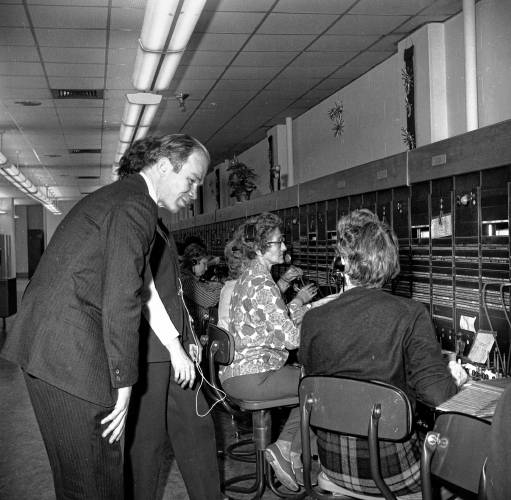
Republican congressional hopeful Richard W. Mallary visits the New England Telephone Company in White River Junction, Vt., on Dec. 31, 1971, and got a chance to visit with the telephone operators. (Valley News - George Lambert) Copyright Valley News. May not be reprinted or used online without permission. Send requests to permission@vnews.com. Valley News file photograph — George Lambert
|
Published: 11-25-2023 1:35 PM
Modified: 11-27-2023 3:34 AM |
WHITE RIVER JUNCTION — For some time now, officials at the Center for Cartoon Studies have thought of the three buildings the school uses in downtown White River Junction as its campus.
Now the school is cementing its presence in the former railroad hub: It’s in the process of acquiring what’s commonly known as the telegraph building or the white telephone building at the corner of Gates and Currier streets. CCS has leased the building for use as storage and as studio space since the school’s early days, president and co-founder Michelle Ollie said.
“A lot of people would have been shy to step in and use” the building, Ollie said in a phone interview.
The school has a purchase-and-sale agreement with Consolidated Communications, Ollie said. She declined to reveal the purchase price or other details until the transaction is complete.
The building, which is part of the White River Junction Historic District, dates to 1922, when telephone connections were made by operators sitting in front of a series of switchboards. Additions built in 1961 and 1975 loom over the original two-story structure.
Since 2007 or so, CCS has used the space as cold storage for books and archives. The top floor houses studios where senior students can work on their thesis projects. The space was once a big cafeteria with a sizable kitchen, and phone company workers sometimes have shared lunch space with students, Ollie said.
The school’s primary office and classroom spaces are still in the former Colodny’s Surprise department store on South Main Street. CCS took possession of the former post office, also on South Main, in 2012 and now has classroom and library space in the building, which was erected in 1934 as a Works Progress Administration project.
Once renovated, the telephone building will be the school’s most publicly accessible space. In addition to housing studio space, the building would become a permanent place for library and archival storage, a classroom, the school’s production lab and applied cartooning lab, and a small bookstore and gallery.
Article continues after...
Yesterday's Most Read Articles
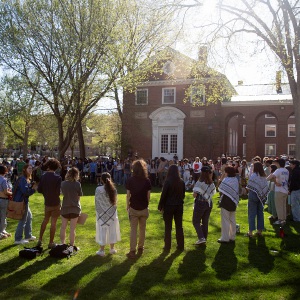 Dartmouth administration faces fierce criticism over protest arrests
Dartmouth administration faces fierce criticism over protest arrests
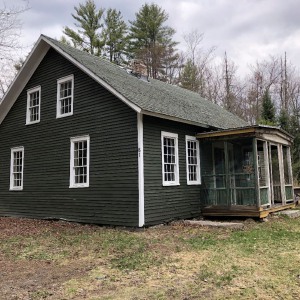 Hanover house added to New Hampshire Register of Historic Places
Hanover house added to New Hampshire Register of Historic Places
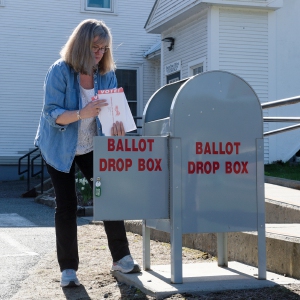 Sharon voters turn back proposal to renovate school
Sharon voters turn back proposal to renovate school
“We’ve done our programming study and it’s a perfect fit,” Ollie said.
The renovation plan has been bolstered by a $971,000 federal grant from the Northern Border Regional Commission, which listed the project cost at just under $2.1 million.
CCS, which is centered around a two-year MFA degree program in cartooning, is unusual in that its campus is situated in a downtown rather than set apart as most institutions of higher education are.
“I think CCS is unique compared to other colleges,” Ollie said. “We don’t have a traditional campus. We have always integrated with White River Junction.”
Ollie participated in the downtown revitalization planning the town of Hartford did in 2008 and 2009. Lori Hirshfield, the town’s director of planning and zoning, noted that much of that planning has come to fruition, with new parking, street and sidewalk improvements.
“They’ve been part and parcel of this work,” Hirshfield said, adding that “to see it being implemented is pretty spectacular.”
The establishment of CCS in 2005 was a major impetus for the revitalization plan, Hirshfield said. It was envisioned as a public-private partnership.
A key aspect of the white telephone building redevelopment is participation in the state’s BRELLA program, which stands for Brownfields Reuse and Environmental Liability Limitation Act. The state law is designed to shield property owners from liability related to contamination.
“I think it’s something you have to do in taking over an old building that’s had a variety of uses,” Ollie said.
With assistance from the state, a private contractor is exploring the extent of contamination at the site.
“Chlorinated solvents (PCE and TCE) identified in sub slab and soil gas samples collected from various locations within the property,” the state’s list of hazardous sites says about the telephone building. “A workplan for supplementary investigation has been approved for implementation.”
“It’s very important,” Hirshfield said. “The state has a whole process of going through and doing your due diligence.” The town had to go through the same process with a property it acquired as part of a federal buyout after Tropical Storm Irene, Hirshfield said.
Ollie said she hopes to be able to reveal more about the school’s plans in the coming year.
Alex Hanson can be reached at ahanson@vnews.com or 603-727-3207.

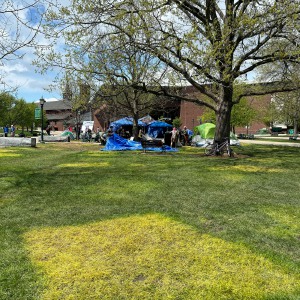 Students take down pro-Palestinian encampment at UVM
Students take down pro-Palestinian encampment at UVM
